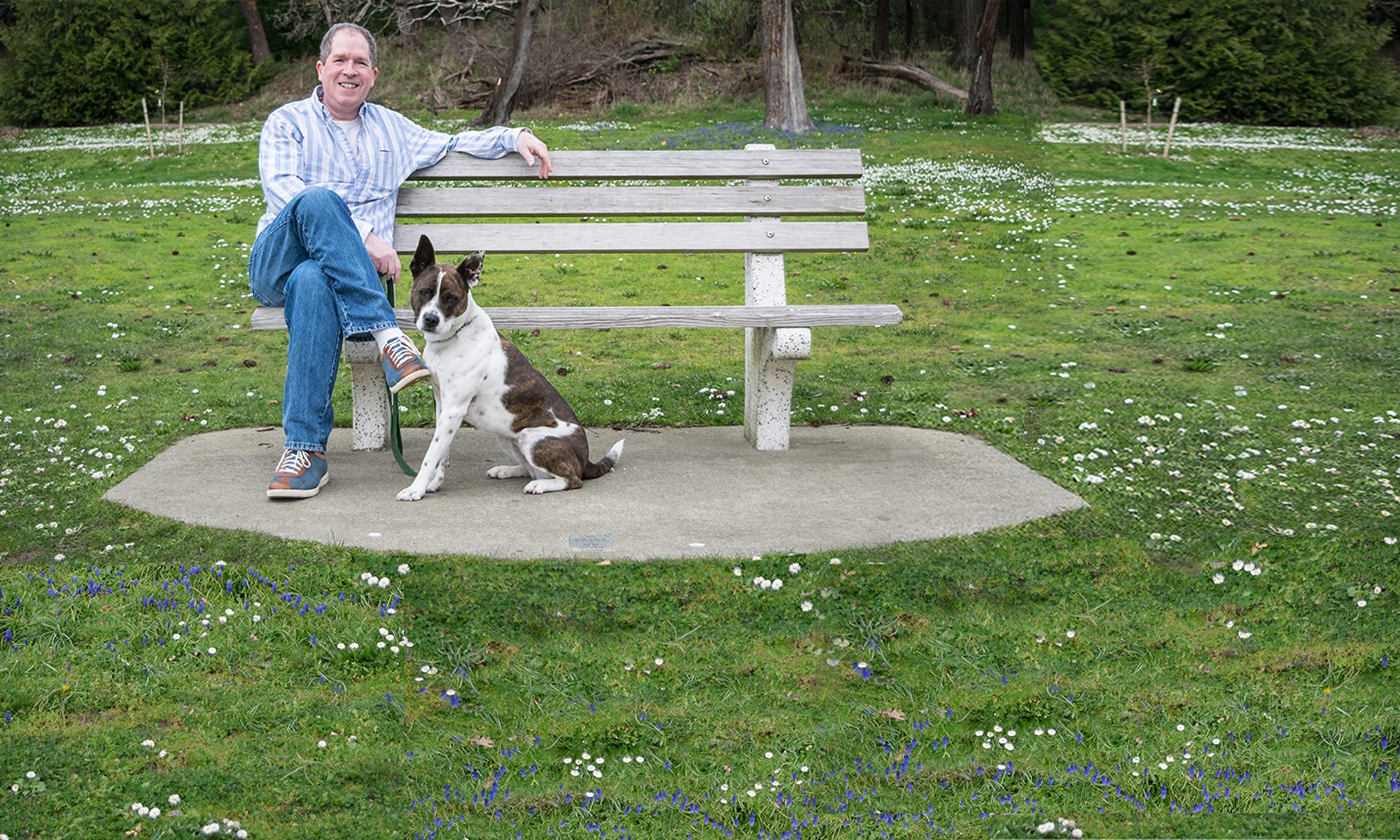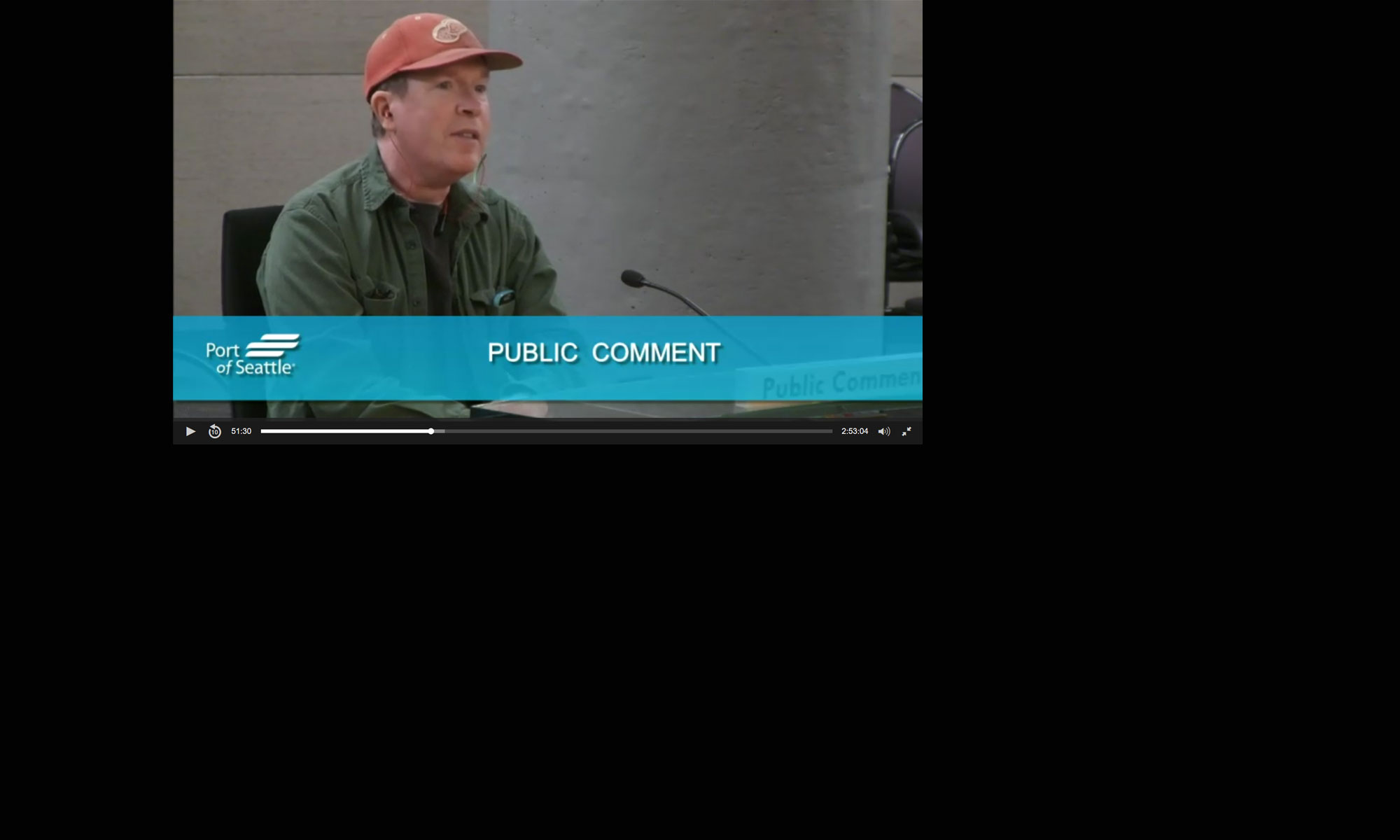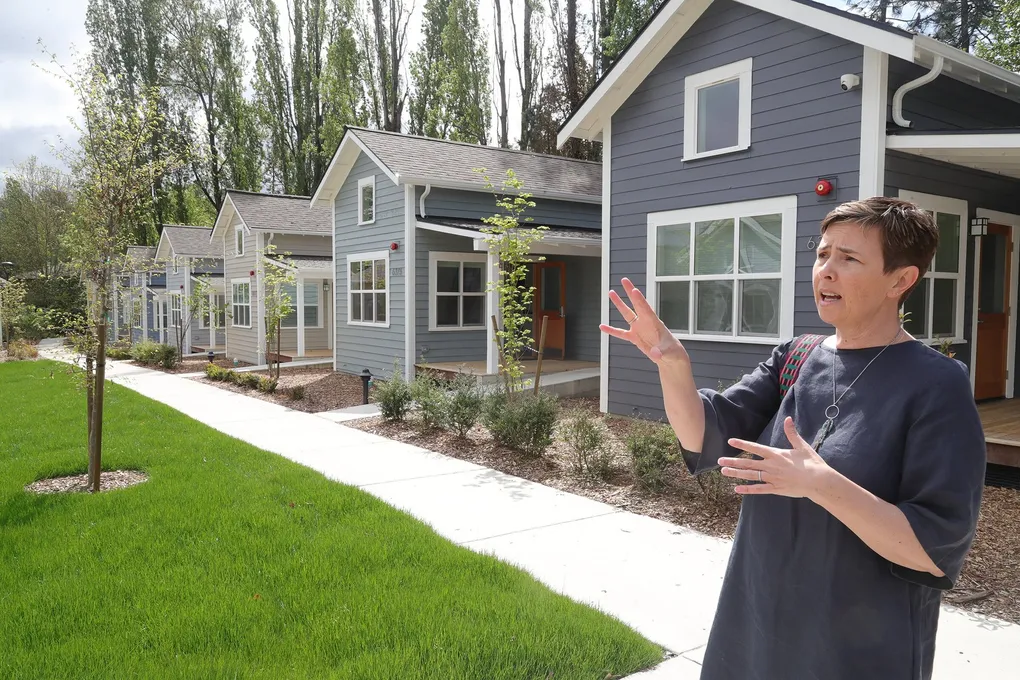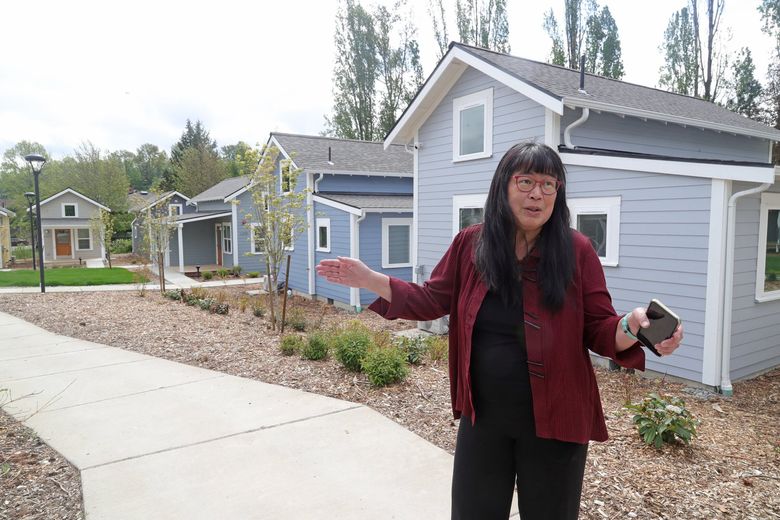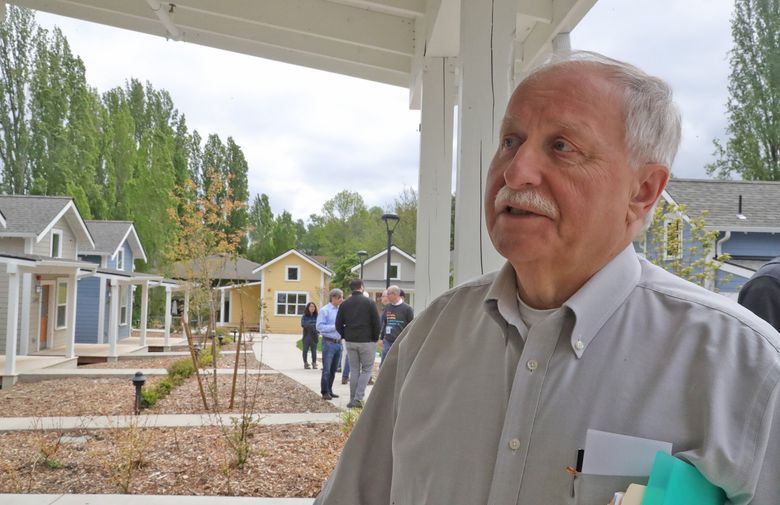Faced with a growing homelessness crisis, Seattle’s choices in how it uses scarce land and funding can mean the difference between hundreds of people sleeping inside or on the street.
That’s why the King County Regional Homelessness Authority has opposed the expansion of single-occupant dwellings, such as tiny homes, in the past.
The agency’s leadership has suggested resources would be better served acquiring denser housing that’s permanent, such as hotels or apartment buildings. They have also criticized the quality of living conditions in tiny home villages, with a spokesperson once calling them – and later apologizing – “shantytowns.”
They remain popular with local elected officials, though, who appear set on proliferating tiny homes, saying they are a way to bring people inside quickly.
A new type of tiny community in Magnuson Park that opened this month appears to strike a partial compromise. Instead of one-room buildings with no indoor plumbing, the 22 new cottages are permanent structures with bathrooms and kitchens.
Essentially single-family housing for formerly homeless people, officials behind the tiny cottages acknowledge the housing model does not maximize density and so may not be suited best for Seattle. But they say tiny cottages might be a bigger factor in addressing homelessness in other parts of the county and state.
These higher-quality models are a new trend across the country as more cities adopt them. Home-owners and renters view them as less of an eyesore, making them easier to place in neighborhoods.
Researchers and advocates also say they promote a sense of community, something proponents posit is just as key to tackling homelessness as housing.
Cottages with space to live
Seattle and other cities have increasingly relied upon tiny homes in recent years as the number of people living outside has grown and a deadly pandemic made denser solutions dangerous. But the quality of housing a “tiny home” provides varies wildly.
Seattle’s 328 tiny homes are owned and operated almost entirely by the nonprofit Low Income Housing Institute. They’re usually about 100 square feet and built by volunteers with materials costing about $4,500, according to the institute’s website.
They usually have just enough space for a twin-sized bed and some storage, and come equipped with a door, one or two windows, laminate flooring, lights and heat.
The institute will also be managing the tiny cottages in Magnuson Park, which are 500 square feet and have a bathroom, kitchen, separate bedroom, foundation, insulated walls, heating, air conditioning and a front porch. The works.
The inside looks like a market-rate one-bedroom apartment with high ceilings and new appliances.
The 22 cottages in Magnuson Park cost about $280,000 apiece to build, including plumbing and other infrastructure.
Both models serve a purpose, the Low Income Housing Institute says. The smaller, cheaper model is meant to be a better alternative to living on the street for a single person, a temporary bridge to more permanent housing.
The tiny cottages will be permanent housing for homeless families with children, seniors, veterans and people with disabilities to live in for as long as they want. Many residents so far are employed through nonprofit Farestart or Seattle Conservation Corps, programs that employ homeless people, and they will be required to pay 30% of their income as rent.
Density or dollars?
An apartment building on the two-acre property in Magnuson Park could make a bigger dent in the region’s growing homelessness crisis than the 36 people who will reside in the 22 cottages.
But proponents of the tiny cottage village say that an apartment building would have been more expensive, taken longer to build and may have been more difficult to drum up neighborhood support.
The Low Income Housing Institute’s latest permanent supportive housing buildings in Seattle and Olympia will have more than 80 units each and will cost $29 million and $36 million, respectively.
The tiny cottages cost $5 million to construct, funded through the state’s Housing Trust Fund and philanthropy.
“We didn’t have the financing for 60 units or 100 units,” said Sharon Lee, executive director of the Low Income Housing Institute.
She noted that individuals and philanthropies were more interested in giving to homeless housing that “gives people a lot of dignity and respect and individuality,” making the cottages easier to fundraise for.
Not only are high-density buildings more expensive outright, they’re more expensive per unit. The apartment-style units cost between 22% to 55% more than each tiny cottage to build.
Part of that is because the cottages were built off-site by construction trade students and professionals and transported to Magnuson Park, eliminating the need for heavy machinery like cranes.
In addition, the smaller modular construction takes less time to build. If not for significant delays due to the pandemic which stretched the construction of the tiny cottages to a full year, Lee said it would have taken mere months to build them.
But this isn’t necessarily going to take over in Seattle, where there is a dearth of available developable land, Lee said. This was a unique situation where the land had been unused for years and nearly free. The City is leasing it out for $1 per year.
Anne Oliva, CEO of the National Alliance to End Homelessness, said there is a constant tension on the West Coast between investing in housing that’s quicker to build and gets some people off the streets faster versus larger buildings that can house more people.
“Not every parcel of land has to have a 20-story building on it,” Oliva said.
Wary residents more accepting
Instead, the model might better fit rural or suburban parts of the state where there’s more empty land, said state representative Frank Chopp, D-Seattle, who helped coordinate state funding for the project.
Tiny cottages also have an advantage of being easier to sell to neighborhood residents, Chopp added.
“What do you think the neighborhood thinks of this? They’re cute,” Chopp said.
That’s important because communities often oppose nearby housing for homeless people. They worry about whether visible drug use, trash or crime will increase, as well as complain that the buildings clash with the look and feel of their blocks.
That resistance can be even stronger in smaller cities and less populated counties, where visible homelessness is in the early stages of growth and most of the housing is for single families.
Krista Evans, a professor at Missouri State University whose research surveyed tiny homes across the country, said she found that housed residents are more supportive of tiny homes when they have foundations, porches, gardens, and other amenities.
She said people are primarily concerned about their homes’ property values, often their largest asset.
Some cottage communities “have actually increased property values rather than decreasing it because they pour a lot of money into the program and the houses look cute,” Evans said.
Model comes with philosophy
The tiny home model is being exported across the country with a philosophy on what is most important to lift people out of homelessness.
The idea is that it takes more than a house, it takes a feeling of belonging to a community. And proponents of tiny cottages say that individual homes like Magnuson’s with front porches, a children’s play area, gardens for people to work on together and a central community gathering space is more conducive to this goal.
Eden Villages based in Springfield, Mo., is one of the main exporters of the tiny cottage model, with units in Phoenix and North Carolina. Chief Visionary Officer Nate Schluester says the root cause of homelessness is “the loss of family and a healthy family safety net.” He said the community built in tiny home communities is a good replacement for that.
Research shows that the root cause of homelessness is a lack of affordable housing for people at the lowest and middle incomes. Some homeless people have physical, mental and substance use issues that make earning money, staying with family or friends and getting and retaining housing more difficult.
Karen Snedker, a professor at Seattle Pacific University who has studied tent cities over the past decade said that communities for homeless people work best when residents feel involved.
“Having some level of power, of voice, of agency, but also some level of responsibility” benefits the functioning of tent cities she has studied, which she thinks would translate to the tiny cottage community.
But Schluester with Eden Villages acknowledges that developing tiny home or tiny cottage communities on the West Coast is harder.
“The West Coast is certainly different. There’s not four acres laying around that’s super affordable for a charity to buy to house forty people,” Schluester said.
But he said even in Seattle where an apartment building might make more sense, there are ways to incorporate more of a sense of community.
“I would think that my entire bottom floor would be a community center,” Schluester said.
